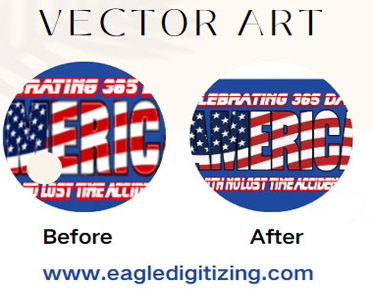How Do I Achieve Vibrant Colors in Machine Embroidery Projects?
Machine embroidery is an art form that allows enthusiasts to create stunning designs on fabric using specialized equipment. One of the key factors that contribute to the beauty of embroidered pieces is the vibrancy of colors. Achieving vibrant colors in machine embroidery projects requires a combination of proper techniques, attention to detail, and an understanding of various factors that influence color rendering. If this post spurred your interest and you want to find out more about Embroidery Digitizing, please feel free to contact us.
Choosing the Right Thread
Quality
of Thread
Selecting high-quality embroidery thread is essential for achieving vibrant colors in machine embroidery projects. Opt for threads that are colorfast, durable, and specifically designed for embroidery purposes. Inferior quality threads may fade over time or bleed onto the fabric, compromising the overall appearance of the embroidery.
Color
Selection
Carefully consider the color palette for your embroidery project to ensure vibrant results. Choose colors that complement each other and the fabric you're working with. Experiment with different color combinations to achieve the desired effect, keeping in mind the theme or design of the project.
Thread
Weight Considerations
The weight of the thread can impact the intensity of the colors in your embroidery design. Lighter weight threads are ideal for intricate details, while heavier threads provide more coverage and depth of color. Consider the level of detail in your design and the fabric you're using when selecting the appropriate thread weight.
Understanding Fabric Selection
Impact
of Fabric on Color Vibrancy
The type of fabric you use can significantly affect the vibrancy of colors in machine embroidery. Certain fabrics may absorb dyes differently, resulting in variations in color saturation. Choose fabrics that are known for their ability to hold vibrant colors and enhance the overall appearance of the embroidery.
Compatibility
with Embroidery Thread
Ensure that the fabric you choose is compatible with the embroidery thread you'll be using. Some fabrics may be too delicate or prone to puckering, which can affect the stitching and color vibrancy. Test the fabric with a sample embroidery design to determine its suitability for your project.
Preparing
the Fabric
Properly preparing the fabric before stitching is crucial for achieving vibrant colors in machine embroidery. This may include pre-washing the fabric to remove any sizing or chemicals that could interfere with dye absorption. Ironing the fabric to remove wrinkles and ensuring it is properly stabilized can also contribute to optimal color vibrancy.
Proper Stabilization Techniques
Importance
of Stabilizers
Embroidery stabilizers play a crucial role in machine embroidery by providing support to the fabric and preventing stretching or distortion during stitching. Using the right stabilizer for your project can help ensure crisp, vibrant embroidery designs. Experiment with different types of stabilizers to find the one that works best for your fabric and design.
Types
of Stabilizers
There are various types of stabilizers available, including tear-away, cut-away, and water-soluble stabilizers. Each type has its own unique properties and is suitable for different types of fabrics and embroidery projects. Consider the characteristics of your fabric and the complexity of your design when choosing the appropriate stabilizer.
Application
Methods
The way you apply the stabilizer can also impact the vibrancy of colors in your embroidery project. Ensure that the stabilizer is securely attached to the fabric and properly aligned with the embroidery design. Experiment with different application methods, such as hooping or spray adhesive, to achieve the best results.
Calibrating Machine Settings
Tension
Adjustment
Proper tension adjustment is essential for achieving crisp, vibrant embroidery stitches. Incorrect tension can result in loose or tight stitches, affecting the overall appearance of the embroidery. Take the time to calibrate the tension settings on your embroidery machine based on the thread and fabric you're using.
Stitch
Density Settings
Adjusting the stitch density settings can also impact the vibrancy of colors in machine embroidery. Too many stitches packed closely together can result in a dense, muddled appearance, while too few stitches may not provide enough coverage. Experiment with different stitch densities to achieve the desired level of color saturation and detail.
Needle
Type and Size
The type and size of the needle you use can affect the quality of the embroidery stitches and the vibrancy of colors. Choose a needle that is appropriate for the fabric you're working with, ensuring that it penetrates the fabric smoothly without causing damage. Experiment with different needle types and sizes to find the one that produces the best results for your project.
Design Considerations
Complexity
of Designs
The complexity of your embroidery design can impact the vibrancy of colors in the final piece. Intricate designs with many small details may require more careful color selection and stitching techniques to ensure vibrant results. Consider simplifying complex designs or breaking them down into smaller sections for easier stitching.
Color
Layering Techniques
Experiment with different color layering techniques to achieve depth and dimension in your embroidery designs. Layering lighter colors over darker ones can create interesting shading effects, while using contrasting colors can make certain elements of the design pop. Consider the order in which you stitch each color to achieve the desired visual impact.
Using
Digitized Patterns
Digitized embroidery patterns offer precise control over color placement and stitching sequences, making them ideal for achieving vibrant colors. Choose digitized patterns that are well-suited to your project and experiment with different color combinations and stitching techniques to bring your designs to life.
Testing and Sampling
Importance
of Test Runs
Before embarking on a full-scale embroidery project, it's essential to conduct test runs to ensure optimal color vibrancy and stitch quality. Use scraps of fabric and spare embroidery thread to test different settings and techniques before applying them to your main project. This allows you to identify any issues and make adjustments as needed.
Sampling
on Different Fabrics
Sampling your embroidery designs on different types of fabric can help you determine which fabrics produce the most vibrant colors. Test the same design on a variety of fabrics to see how the colors appear and how the stitching behaves. This can help you choose the best fabric for your project and adjust your techniques accordingly.
Adjusting
Settings Based on Results
After conducting test runs and sampling on different fabrics, carefully evaluate the results and make any necessary adjustments to your machine settings and techniques. This may involve tweaking tension, stitch density, or color choices to achieve the desired level of color vibrancy and stitch quality. Don't be afraid to experiment and make changes until you're satisfied with the results.
Maintenance and Cleaning
Regular
Machine Maintenance
Proper maintenance of your embroidery machine is essential for achieving vibrant colors and ensuring smooth, trouble-free stitching. Follow the manufacturer's recommendations for regular cleaning and maintenance, including oiling moving parts and replacing worn or damaged components. This helps prevent issues that can affect stitch quality and color vibrancy.
Cleaning
Thread Paths and Tension Disks
Regularly clean the thread paths and tension disks of your embroidery machine to remove dust, lint, and debris that can interfere with thread tension and color rendering. Use a soft brush or compressed air to gently remove any buildup, taking care not to damage delicate components. This helps ensure consistent stitch quality and vibrant colors in your embroidery projects.
Proper
Storage of Threads and Fabrics
Store embroidery threads and fabrics properly to prevent color fading, deterioration, or damage over time. Keep threads in a cool, dry place away from direct sunlight and humidity to maintain their vibrancy and integrity. Store fabrics in a clean, dust-free environment, preferably rolled rather than folded, to prevent creasing and preserve color quality. Proper storage practices help ensure that your materials remain in optimal condition for future embroidery projects.
Experimenting with Color Combinations
Color
Theory Basics
Understanding the basics of color theory can help you create harmonious color combinations that enhance the vibrancy of your embroidery projects. Consider factors such as hue, saturation, and value when selecting colors for your designs. Experiment with complementary, analogous, and monochromatic color schemes to achieve different effects and moods.
Creating
Harmonious Color Schemes
Experiment with different color combinations to find the ones that work best for your embroidery projects. Consider the overall mood and theme of your design, as well as the colors of the fabric you're working with. Pay attention to how different colors interact with each other and how they appear in different lighting conditions. Don't be afraid to mix and match colors to create unique and visually striking embroidery designs.
Bold
vs. Subtle Color Choices
Consider the impact of bold versus subtle color choices on the overall vibrancy of your embroidery projects. Bold, saturated colors can create a dramatic and eye-catching effect, while subtle, muted colors can lend a sense of elegance and sophistication. Experiment with different color palettes to find the right balance for your design and personal style.
Incorporating Special Techniques
Metallic
and Specialty Threads
Experiment with metallic and specialty threads to add shimmer and texture to your embroidery projects. Metallic threads can create stunning visual effects, especially when used for highlights or accents. Specialty threads, such as glow-in-the-dark or variegated threads, can add depth and interest to your designs. Explore different types of specialty threads and experiment with incorporating them into your embroidery projects for unique and dazzling results.
Gradient
and Ombre Effects
Create gradient and ombre effects in your embroidery designs by gradually transitioning between different shades of the same color or between complementary colors. This technique adds depth and dimension to your designs, making them appear more dynamic and visually engaging. Experiment with different blending techniques and color transitions to achieve the desired effect, taking into account the size and complexity of your design.
Embellishments
and Overlays
Enhance the vibrancy of your embroidery projects by incorporating embellishments and overlays. Add beads, sequins, or crystals to your designs for extra sparkle and texture. Experiment with appliqués or fabric overlays to introduce additional colors and patterns into your embroidery designs. Consider how these embellishments interact with the thread colors and fabric textures to create a cohesive and visually appealing composition.
Paying Attention to Detail
Checking
Thread Tension Throughout the Project
Monitor thread tension regularly throughout your embroidery project to ensure consistent stitch quality and color vibrancy. Adjust tension settings as needed to prevent loose or tight stitches that can detract from the overall appearance of the embroidery. Pay close attention to areas of high detail or tension changes to maintain optimal stitch quality and color saturation.
Trimming
Excess Threads
Trim excess threads carefully to maintain clean lines and a polished finish in your embroidery projects. Use sharp embroidery scissors to snip threads close to the fabric surface without cutting into the stitches. Pay attention to areas where multiple thread colors meet or overlap to ensure seamless transitions and crisp color definition.
Final
Inspection Before Completion
Conduct a final inspection of your embroidery project before declaring it complete. Check for any loose threads, missed stitches, or other imperfections that may detract from the overall appearance of the design. Make any necessary touch-ups or adjustments to ensure that your embroidery project meets your standards for quality and craftsmanship.
Conclusion
Achieving vibrant colors in machine embroidery
projects requires a combination of skill, technique, and creativity. By
following the tips and techniques outlined in this article, you can create
stunning embroidery designs that truly stand out. Experiment with different
threads, fabrics, and techniques to discover what works best for your projects
and personal style. Remember to pay attention to detail, practice regularly,
and enjoy the creative process of bringing your embroidery designs to life. With dedication and perseverance, you can achieve
vibrant and captivating results in your machine embroidery projects.



